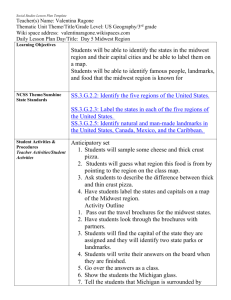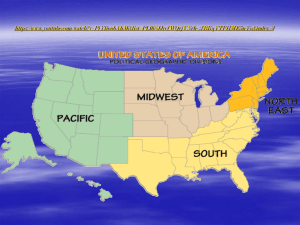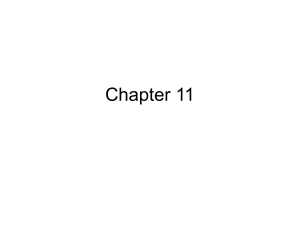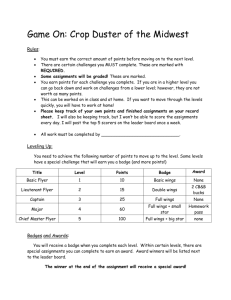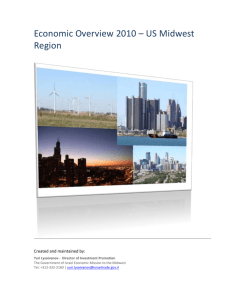Unit 5 Week 1, Day 2 4th Grade Unit Title: America*s Heartland
advertisement
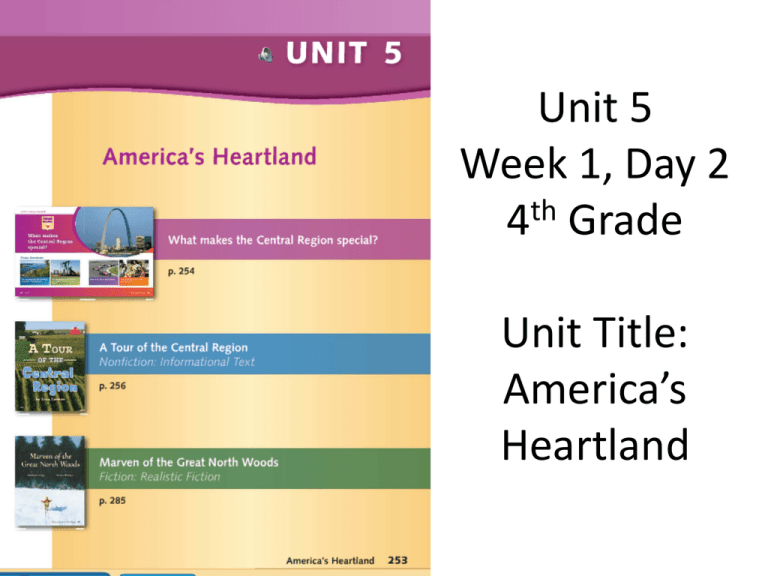
Unit 5 Week 1, Day 2 th 4 Grade Unit Title: America’s Heartland p. 262 What kind of business is pictured here? Why are there many farms in this part of the country? (See if you can use the words basin, landform, transport, and/or flourish.) Activate Prior Knowledge • Today you’ll read about the Midwest and how it has grown and changed during the history of the United States. • What do you know about the history of the Midwest. Tell what you know about Native Americans, settlers, and how the US grew larger by getting more land. • What might cause a city to grow and flourish? What Midwestern cities do you recognize? What do you know about these cities? What is life like in the Midwest? Why? Theme Vocabulary Knowing these words will help you answer the Theme and Focus Questions. • Basin • Landform • Transport • Flourish Let’s try to tell a short story about some place other than the Midwest using the theme vocabulary. For example: imagine you have discovered a new planet and are describing the land and its inhabitants. Visualize • Readers visualize what they read by using the words on the page to form pictures in their minds of the people, places, actions, and things the author describes. • Let’s look at the paragraph on p. 260. This paragraph gives me many ideas about what the Midwest looks like. I can see the images in my mind. I picture waving grass and farm animals, such as cows and sheep. I imagine rolling hills covered with forests. Midwest Let’s add key words that show you what you visualize as you read about the Midwest. Practice visualizing as you read p. 262. What do people see, hear, feel, smell, or taste living in different parts of the Midwest? Writers help readers visualize by using descriptive and colorful language when they write. For example, this author wrote rolling hills covered with forests to help readers “see” the text. •How do writers help readers visualize? Prepare to Read In Chapter 1 of Tour of the Central Region, you learned about the geography and economy of the Midwest. Today you’ll learn about the history and culture of the region. Let’s add related words to the web. Culture History Midwest As settlers began to move to the Midwest, they cleared land, built farms, and founded towns and cities. Preview and Predict • Open to Chapter 2 of A Tour of the Central Region. Look at the chapter title, subheads, photographs, map, captions, and highlighted words. • Look at the header “The Midwest Way of Life” and the photographs on pp 269-271. What do you think this section will be about? What does this picture on p.268 make you think this section will be about? What do the header Midwest Way of Life and these pictures make you think this section will be about? Your Purpose in Reading this Chapter • Read to find answers to the Theme Question: What makes the Central Region special? • You can also set your own purposes for reading. Maybe you want to learn more about something that looks interesting to you. Read Chapter 2 with your partner. This illustration of Native Americans hunting shows what the land was like before settlers moved there. The photograph on p. 267 shows homesteaders in front of their sod house. What do you visualize when you think about life at that time. • With your partner summarize what they learned about settlers in the Midwest and how the region flourished. • Talk about the part of the chapter that was most interesting to you. • Tell your partner about a part of the text you visualized while reading. • With your partner list aspects of modern culture in the Midwest. Then, as a group we’ll discuss which part of the culture interests you the most. Let’s go back to the concept web and add information from Chapter 2. Share how the history and culture of the Midwest makes it a special place. How did visualizing help you understand what you read? Spelling and Phonics • Practice the k, ng, and kw sounds. • Who remembers the ways that words with these sounds are spelled. • Use your spelling lists to write a sentence for each word and then read their sentences to partners. The partners will spell each word and give its meaning. • Then switch roles. Fluency • Turn to “Homestead Act Signed” on p. 6 of your Practice Companion. Review the article. What was the Homestead Act? • Today focus on phrasing as you read the article. • Phrasing is chunking text into small, meaningful phrases. Phrasing helps readers better understand what they read. Phrasing • Listen as I read the first sentence without phrasing. On this momentous day President Abraham Lincoln signed the Homestead Act into law. • Now I’ll read the sentence and break the sentence into phrases. On this momentous day, President Abraham Lincoln signed the Homestead Act into law. What differences did you hear between the readings? Which was easier to understand. Now I’ll read the whole selection. Listen carefully to the phrasing. Then we’ll read the passage together. Wrap Up • What’s the topic of your group’s reading selection? • What’s something interesting they’ve read so far? • What are some vocabulary words from your group’s book? • Do you know anything about the topics that the other groups are reading about? • Do you see any connections between the books? • How does what you’ve read answer the week’s Focus Question? • You can write about this in the Lead 21 eTools 21 section when you have computer time.
